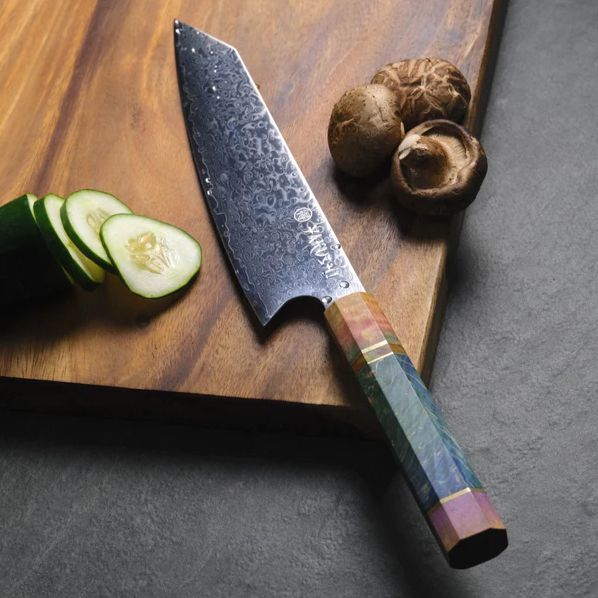Japanese Cooking Knives: A Guide to Precision, Craftsmanship, and Culinary Art

Japanese cooking knives are revered across the culinary world for their superior craftsmanship, precision, and razor-sharp edges. Unlike Western-style knives, which are typically heavier and more robust, Japanese knives are often lighter, sharper, and more specialized. This difference in design and functionality makes them a preferred choice for professional chefs and home cooks who value performance and precision in their kitchen tools. Whether you're a novice cook or an experienced culinary artist, understanding the various types of Japanese cooking knives and how to maintain them will enhance your cooking experience.
The Craftsmanship Behind Japanese Cooking Knives
The excellence of Japanese knives lies in their meticulous craftsmanship, a tradition rooted in the ancient art of samurai sword making. This heritage of precision metalwork has been passed down through generations, resulting in knives that are not just tools but works of art. Most Japanese knives are made from high-carbon steel, known for its ability to hold a sharper edge for longer periods. This steel is harder than the steel used in Western knives, making Japanese knives more delicate and precise.
These knives are traditionally forged using multi-layered techniques, combining softer outer layers of steel with a hardcore. This process creates a knife that is both durable and incredibly sharp. The craftsmanship behind these knives enhances their performance and contributes to their aesthetic appeal, making them a prized possession in any kitchen.
Why Choose Japanese Cooking Knives?
Japanese cooking knives offer several advantages over other kitchen knives. Here’s why they’re a must-have for both amateur and professional chefs:
Superior Sharpness
Japanese knives are known for their razor-sharp edges, which can make cutting, slicing, and chopping more efficient. The sharpness also allows for more precise cuts, which is especially important in dishes that require delicate knife work, such as sushi or intricate vegetable preparations.
Lightweight Design
The lightweight nature of Japanese knives makes them easier to handle and reduces fatigue during long cooking sessions. This design allows for more finesse and control, making these knives perfect for tasks that require accuracy.
Durability
Despite their thin, lightweight design, Japanese knives are incredibly durable when properly maintained. The high-carbon steel used in many of these knives is both strong and long-lasting, retaining its sharpness with less frequent sharpening than other types of knives.
Specialization
Japanese knives are highly specialized, each designed for specific tasks. This specialization allows chefs to choose the best tool for the job, resulting in greater efficiency and better food presentation.
Maintaining Japanese Cooking Knives
Proper maintenance is crucial to preserving the sharpness and longevity of your Japanese cooking knives. Because these knives are made from harder steel, they can be more prone to chipping or dulling if not cared for properly. Here are some tips to ensure your knives stay in optimal condition:
Proper Storage
Always store your knives in a way that protects the blade. Using a knife block, magnetic strip, or protective sheath will help prevent damage to the edge and reduce the risk of injury.
Avoid Hard Surfaces
Cutting on hard surfaces like glass or stone can quickly dull your knife. Always use a soft cutting board, such as wood or plastic, to protect the edge of your knife.
Regular Sharpening
The most important aspect of knife care is regular sharpening. While honing rods can help maintain the edge of Western knives, Japanese knives typically require the use of a whetstone. Whetstones offer precise control over the sharpening process, allowing you to maintain the delicate edge of your knife without damaging the blade. Be sure to choose the right grit level for your whetstone, depending on whether your knife needs basic sharpening or fine-tuning.
Final Thoughts
Japanese cooking knives are a testament to centuries of craftsmanship and a deep understanding of culinary needs. Their sharpness, precision, and specialization make them an essential tool for anyone serious about cooking. Whether you’re slicing vegetables with a Nakiri or fileting fish with a Deba, these knives will make your cooking more efficient and enjoyable.
